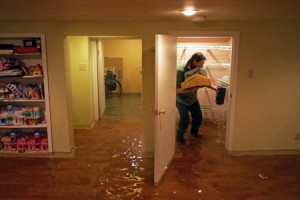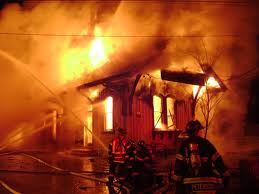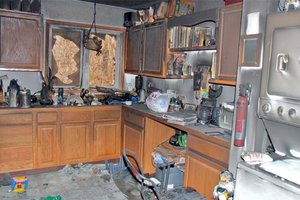Does your Frisco Roof Have Proper Ventilation? Part 2
Does your Frisco Roof Have Proper Ventilation? Part 2
Attic Ventilation Systems, Part 2
by Kenton Shepard and Nick Gromicko
Passive vents require no electricity, but their effectiveness often depends on their being properly designed for a specific home site.
A well-designed passive ventilation system has an intake device located low in the roof, with an exhaust installed near the ridge.
In a balanced system, the net opening of the intake will be approximately the same as the net opening of the exhaust.
Soffit Vents
If the system is out of balance, it’s better to have more ventilation lower in the roof by way of larger intakes.
You may see individual vents each serving a rafter bay, or continuous vents, as you see here.
As you inspect the attic, make sure that the soffit vents are not blocked by insulation. This is especially common in attics with blown-in insulation.


If you find blocked vents, comment on them in your inspection report
If the insulation is not held back, you should see baffles installed to create an air space.
It’s important that baffles extend through to the exterior so that they actually allow air flow into the attic. Once the siding and soffits are complete, you won’t be able to confirm this visually. Unless you can actually feel air flowing from the baffles, you will not be able to confirm functional air flow, and you should disclaim it.
Gable Vents

Frisco Roof
Gable vents are installed in the gabled ends at opposite ends of the attic. They’re most effective when the vents align with the prevailing winds. This allows high air pressure on the upwind side of the home to push air into the attic, and low pressure on the downwind side to pull air out.
When prevailing winds blow perpendicular to the vents, the gable vents act as both intake and exhaust. Less air exchange takes place and attic ventilation is not uniform, so it’s less effective.
Roof Vents

Frisco Roof
Roof vents, sometimes called “turtle” vents, should be installed near the roof peak. This illustration shows cool air entering the soffit vents.
It rises along the underside of the roof sheathing and absorbs heat before exiting the attic through the roof vent.
Here, you see it before and after installation.
Sometimes, the roofers forget to cut the underlayment. Roof vents do not work unless the underlayment is cut out.
Wind Turbine
Occasionally, you’ll see a turbine vent. Turbines use a series of specially-shaped vanes that catch wind and spin the turbine. As the vanes spin, they create an area of low pressure which pulls air from the attic.
While they’re not as effective as ridge vents, they do provide a low-cost alternative in areas with consistent wind speeds of at least 5 mph.
That’s the power cord for the evaporative cooler you see improperly routed through the turbine vent into the attic.
No need to struggle with your Frisco roof repair – you have enough to think about. Your insurance will cover the cost of your Frisco roof repair. We are the Frisco roof company that knows the complete ins and outs of what needs to be done to completely take care of your Frisco roof damage. At Go Go Green Roofing and Solar we will take care of the whole insurance process for you. Call us today at (682) 325-2682 for your free evaluation.
















